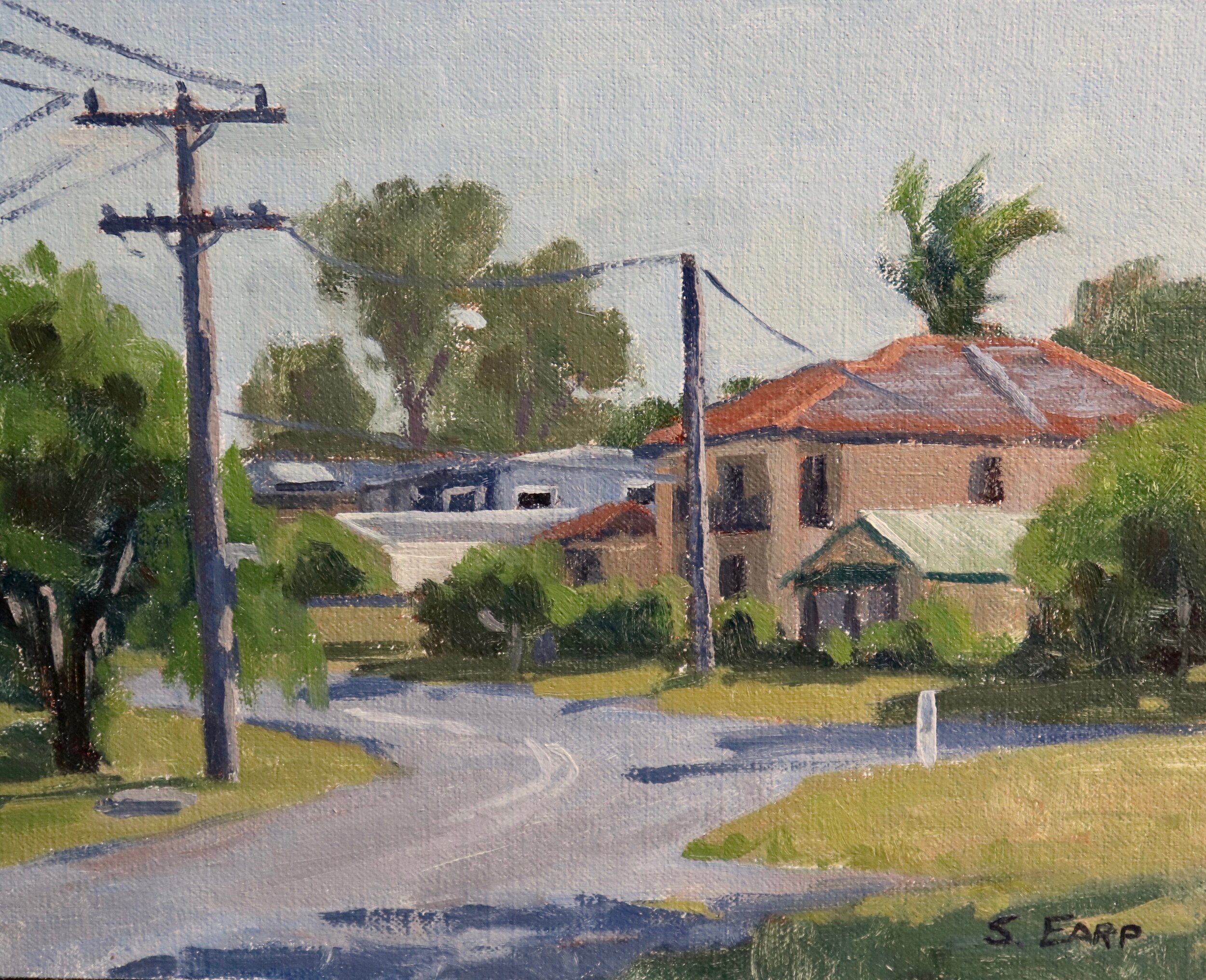
In this painting demonstration I will show you how to paint a street scene. The art work that is featured in this tutorial was originally painted outdoors en plein air in a typical Australian suburban street.
Now you might think, why paint a street scene? Well from a composition perspective I was drawn to this particular street corner as there are lots of interesting things going on in the scene. The other thing about painting outdoors is that it’s a great way of capturing the atmosphere of everyday scenes and locations. For me my plein air paintings are like a diary of my life in art.
Even though this streetscape was painted outdoors the techniques I will share with you in this blog post are just as applicable in the studio. With a scene like this you can make it as detailed or as impressionistic as you like.
Reference Photos
If you would like to have a go at painting this, please feel free to use and copy the reference photos.
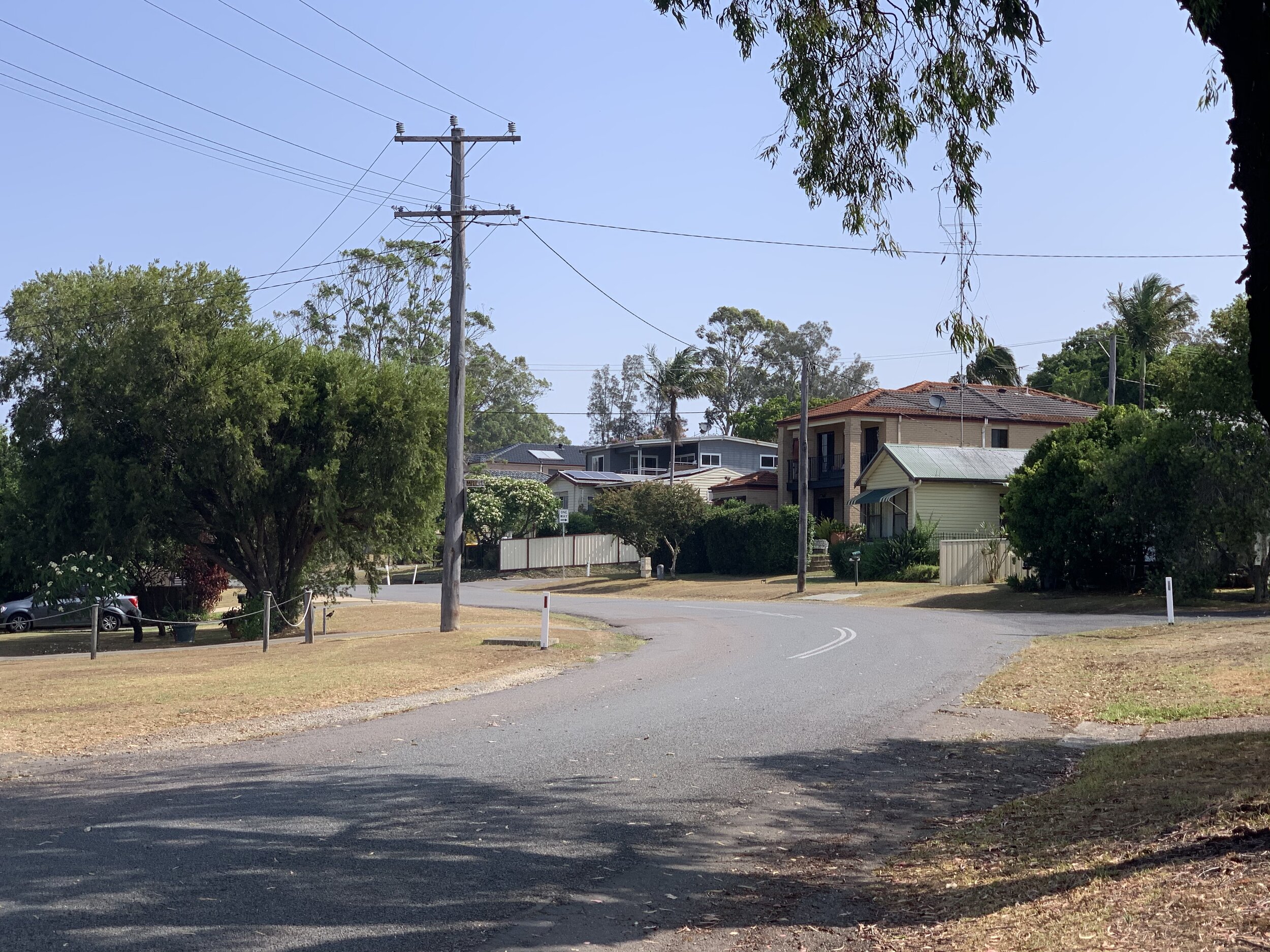
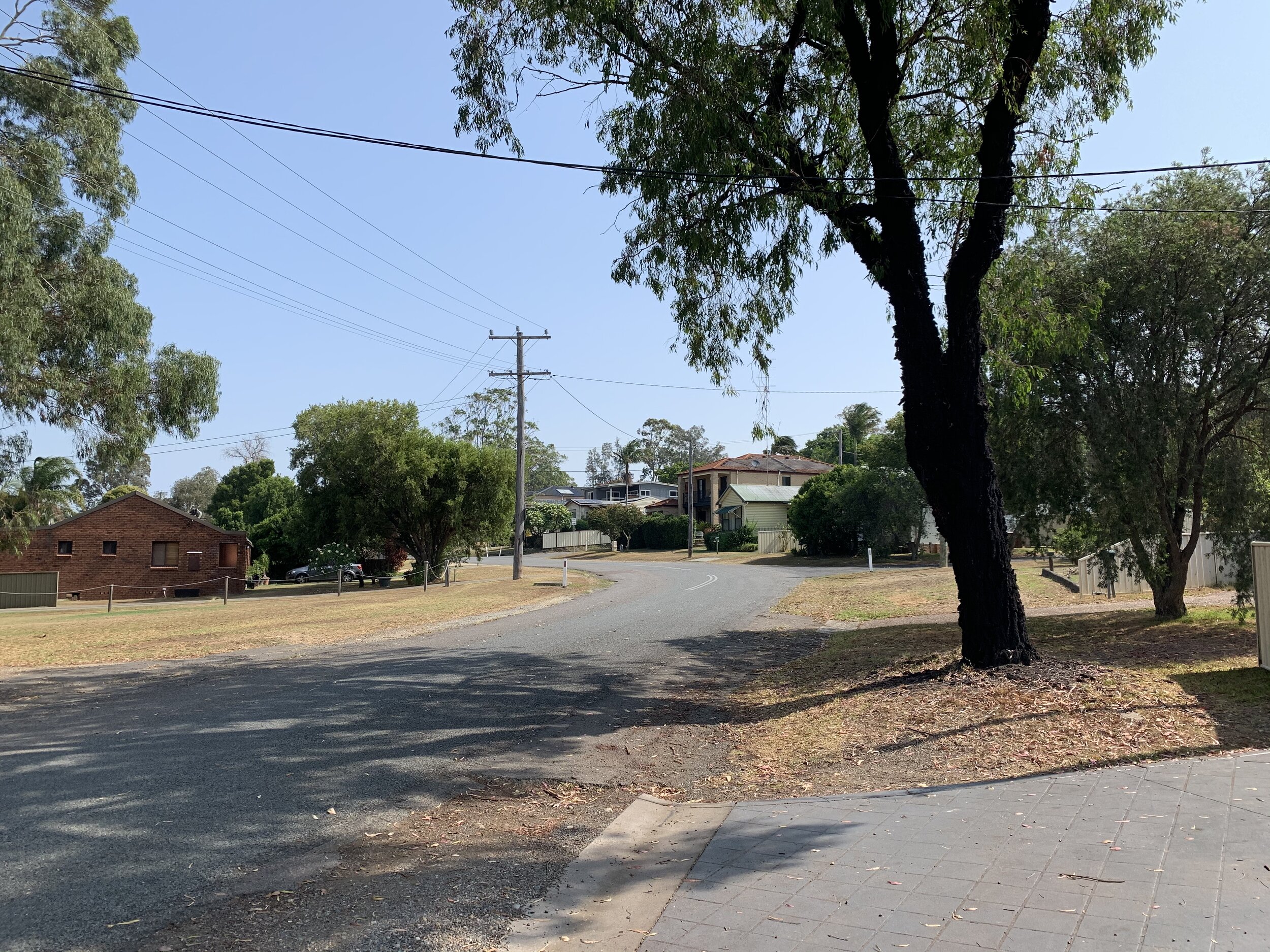
Composition
This street is located in the Central Coast area of Australia. The time of year was summer and the weather had been hot and dry so much so that the grass was turning straw coloured. I was particularly drawn to the corner of the street as there are lots of forms and elements that would create an interesting composition. There are houses, trees, power poles and the road which will lead the eye and provide a sense of rhythm in the painting.
I moved a couple of things in the composition to make the main focal area in this painting the large gum tree in the background, but overall I want to convey a sense of balance and rhythm. I have incorporated and ‘S’ composition where the road leads the eye towards the gum tree forming a subtle ‘S’ shape.
The power poles help to anchor the composition and the large terra cotta coloured house provides a counter weight to the right side of the painting helping to maintain the balance.
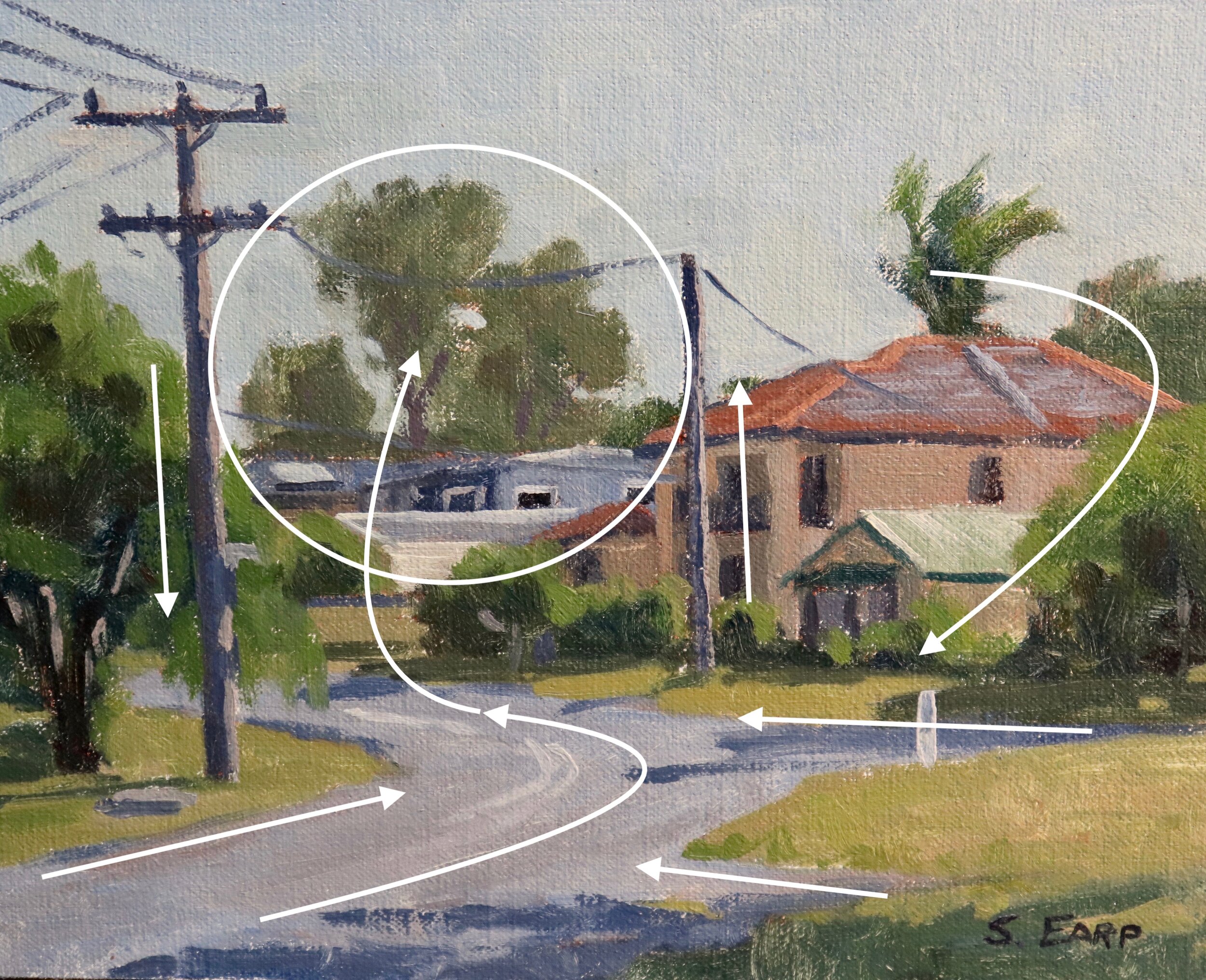
Colours
I painted this artwork using oil paint and the colours I used in this painting are as follows:
- Titanium white
- Burnt sienna
- Yellow oxide
- Cadmium yellow
- Cadmium orange
- Quinacridone crimson
- Ultramarine blue
- Phthalo green
Brushes
Here is a list of the brushes I used in this painting:
- No.6 flat
- No.2 flat
- No.1 round
- No.0 round
Painting Demonstration
I am painting on an 8” x 10” oil primed linen panel. First of all I sketch out my composition with a No.1 round brush and burnt sienna mixed with Liquin Original (Liquin). Liquin improves the flow of the paint and speeds up the drying time.

Once I’ve sketched out my composition I begin establishing the dark values in the painting first. This includes mainly the tree and grass shadows which I mix with a combination of ultramarine blue and yellow oxide. For the lighter values in the background tree I have used the same colours but I have also mixed in a little titanium white. I have also allowed the burnt sienna from the sketch outline to mix into the paint.
The grass shadows are a mix of ultramarine blue, yellow oxide and titanium white.
I’m keeping this painting more loose and gestural so I begin by using a No.6 flat brush.

Once I have painted the shadows I paint the sky, the road, the house in the background and the power poles.
The Australian sky is often dusty especially in hot weather so the sky can often look hazy. For the sky I mix a combination of ultramarine blue, titanium white and the I introduce a small amount of yellow oxide. Be careful not to add to much yellow oxide otherwise you risk your sky looking green.
I paint the road with a simple mix of ultramarine blue, burnt sienna and titanium white. Ultramarine blue and burnt sienna combine with each other and make some really nice natural looking greys with them. Burnt sienna is a dark orange and because orange is opposite to blue on the colour wheel, the two colours cancel each other out.
I am able to use the same colours (ultramarine blue and burnt sienna) for the power poles and the house in the background. I adjust the value with titanium white. For the house in the background and the shadows in the road I used more ultramarine blue in my mix.
I use a No.6 flat brush for the sky and road.
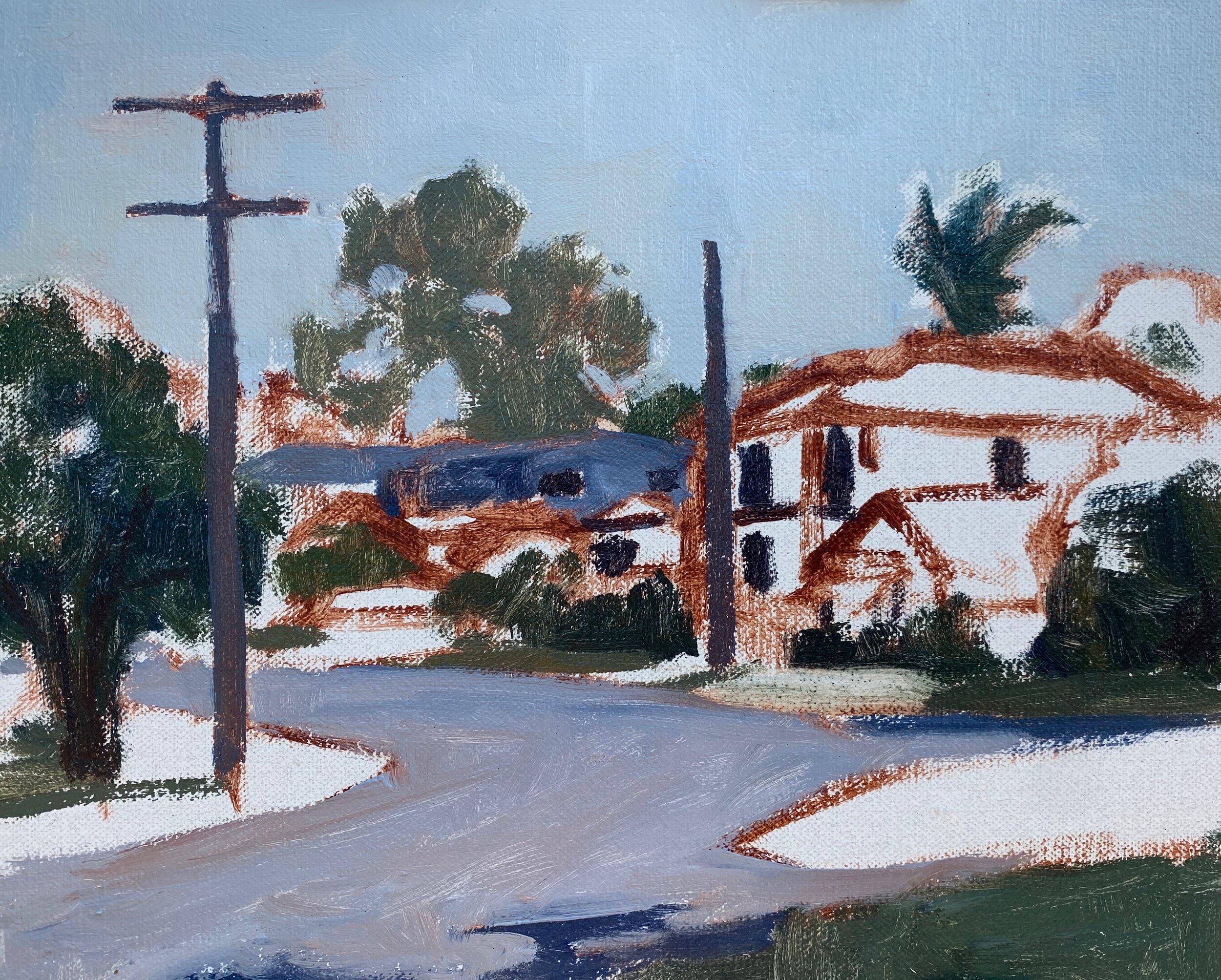
I paint the grass with a mix of ultramarine blue, yellow oxide, a little burnt sienna and titanium white. The grass has a much lighter value compared with the trees, shadows and houses. Grass is often some of the lightest values to be found in the landscape.
I use a No.6 flat brush for the grass.

The house on the right is a terra cotta colour characterised with a few subtle hues. I mix burnt sienna, yellow oxide, a little ultramarine blue and titanium white for the walls of the house . The roof is a rusty red colour so I mix burnt sienna, quinacridone crimson, cadmium orange and titanium white. For the forward facing area of the roof I mixed ultramarine blue, burnt sienna, quinacridone crimson and titanium white.
The small house next to the larger terra cotta coloured house has a green roof and a green border around the eaves. I mix yellow oxide, ultramarine with a little phthalo green and titanium white. For the green border I use less titanium white in my mix. The walls of the house are a mix of yellow oxide, burnt sienna, ultramarine blue and titanium.
I used smaller No.2 flat brushes and No.0 round brushes for the doors and windows.
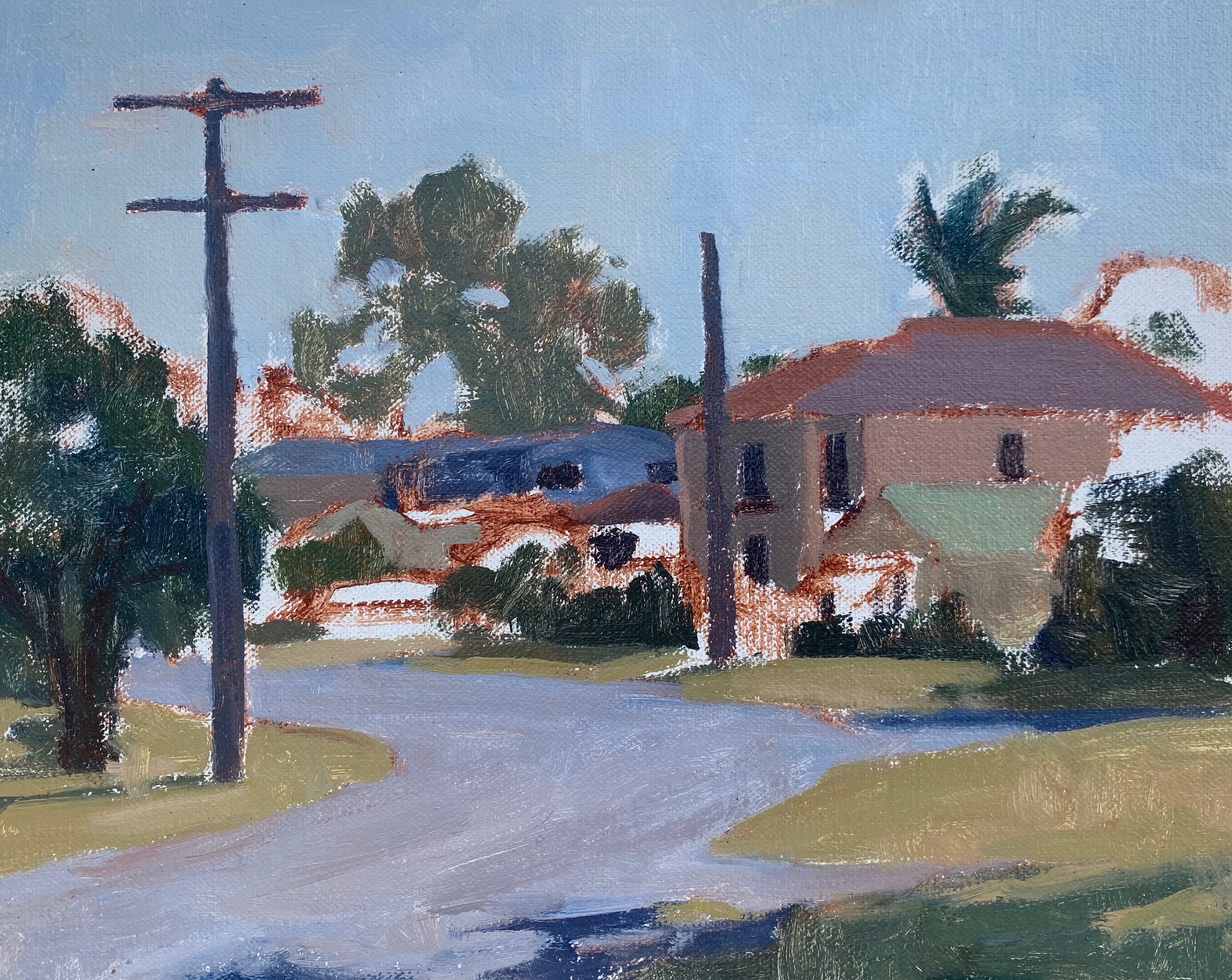
Next I paint the areas of trees and palm foliage that are in light. First of all I mix some colour for the half tone greens, then I shall be adding highlights to the vegetation at the end of the painting.
I create a green that is a little more saturated than the grass using a mix of cadmium yellow, ultramarine blue, a little cadmium orange and titanium white. I vary the amounts of each colour in the mix to create a few different foliage tones.
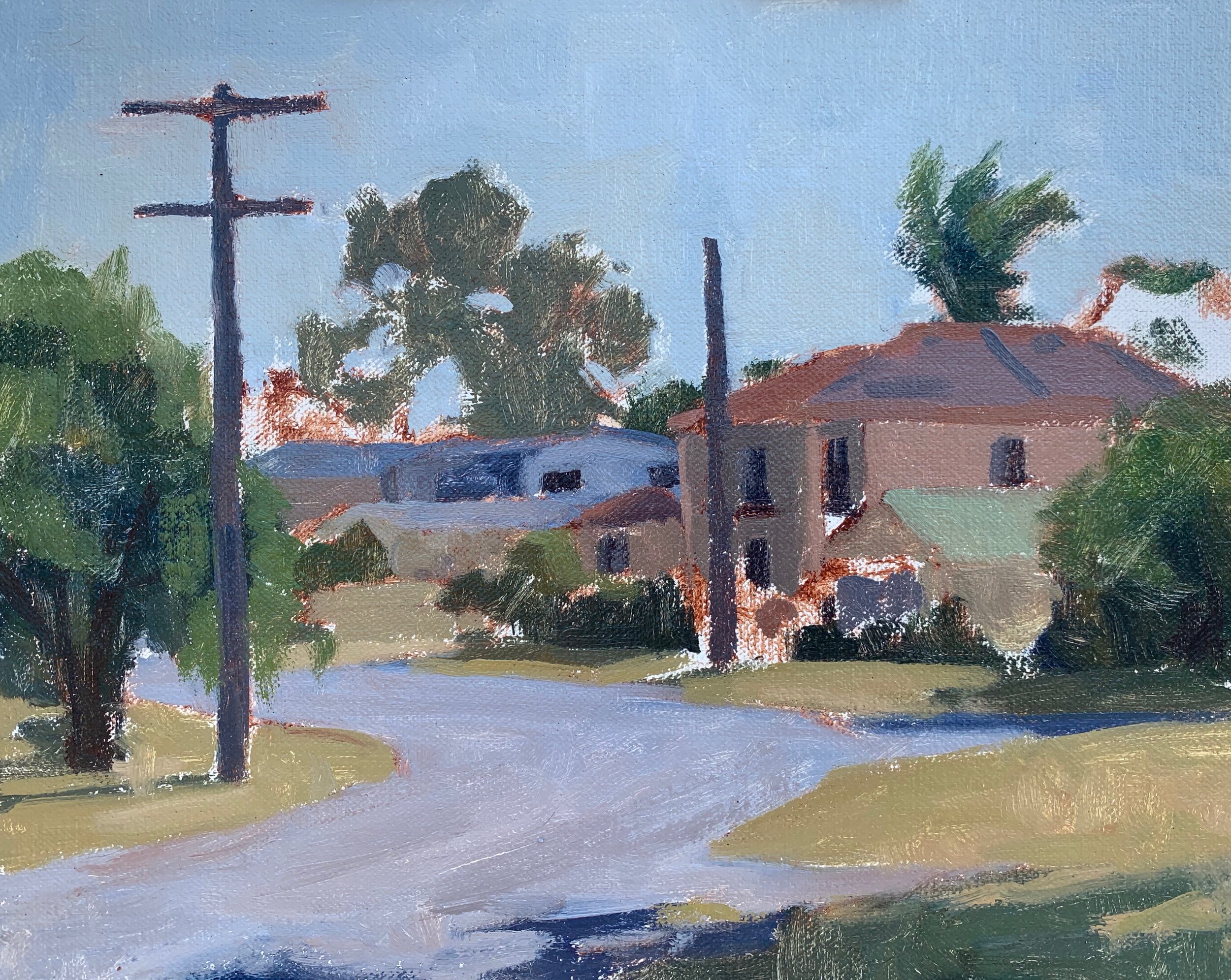
I add final details to the painting by painting some highlights on the trees and bushes. This is a mix of ultramarine blue, cadmium yellow, cadmium orange but with more titanium white.
I paint the areas in light on the power poles using a mix of ultramarine blue, burnt sienna and titanium white. I also paint the wires using the same colours but with more ultramarine blue in the mix and less titanium white to make a darker tone.
I paint the road markings and add a few details within the houses to define the doors and windows using a No.0 round brush.

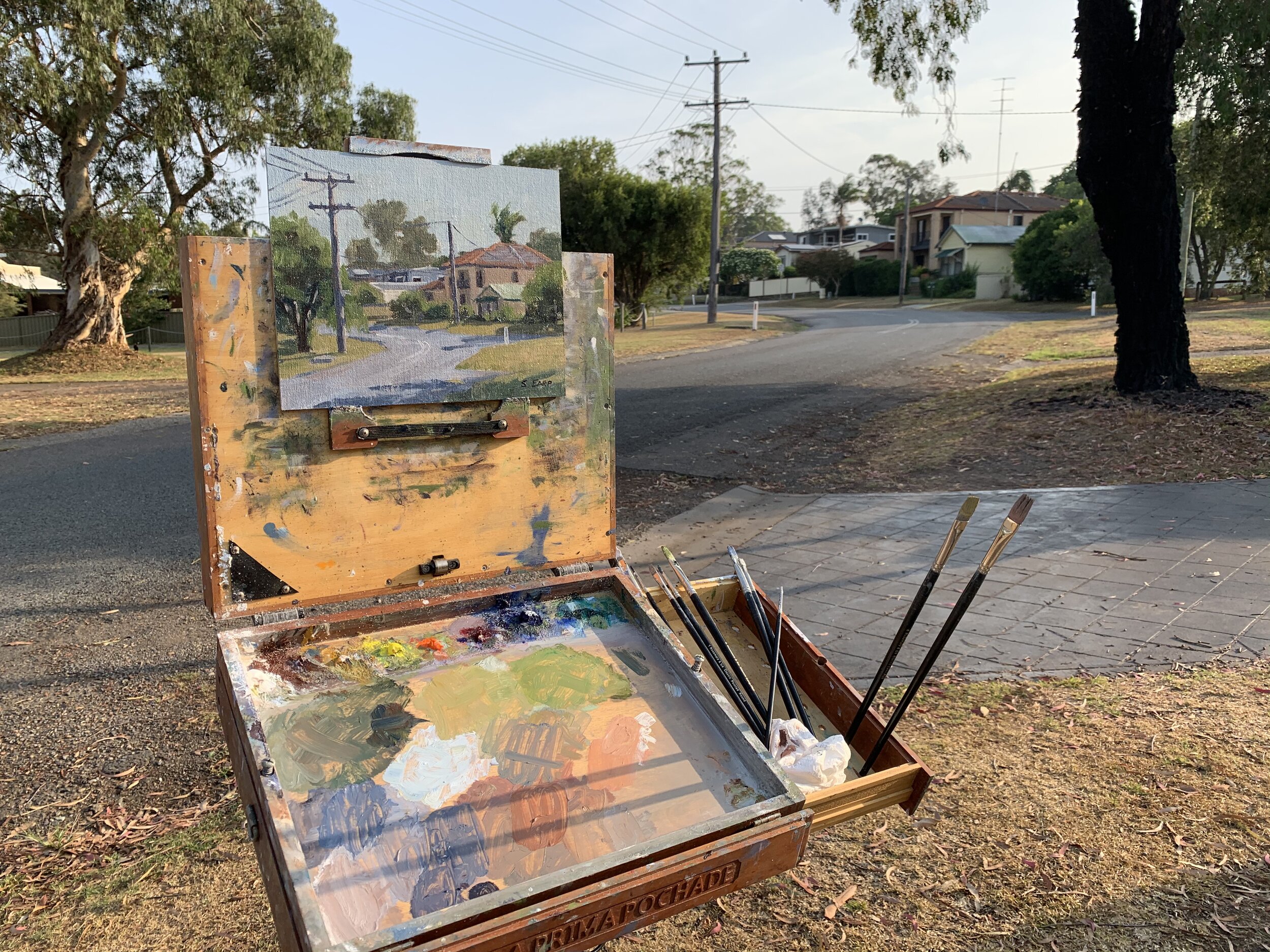
Thanks for reading 😊
